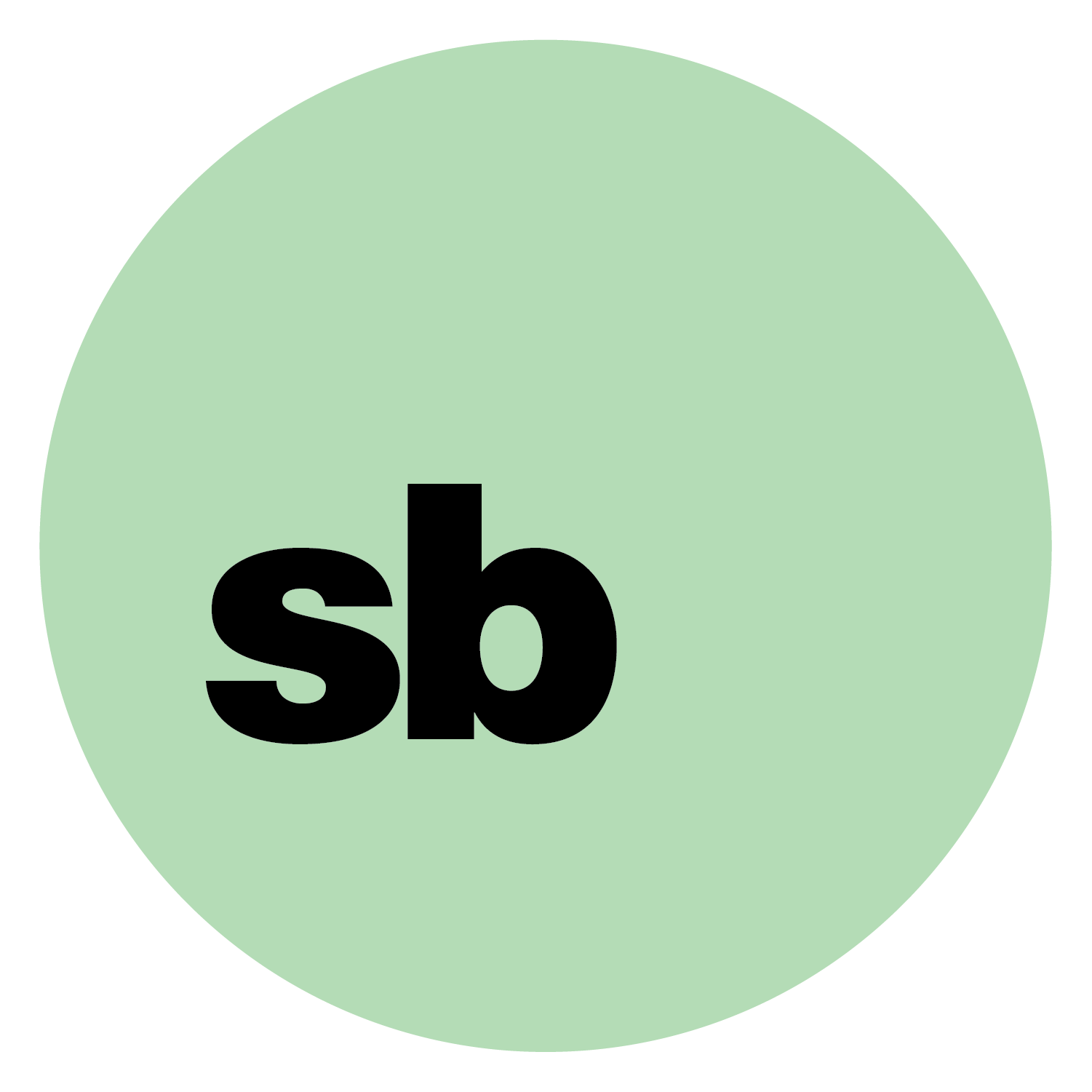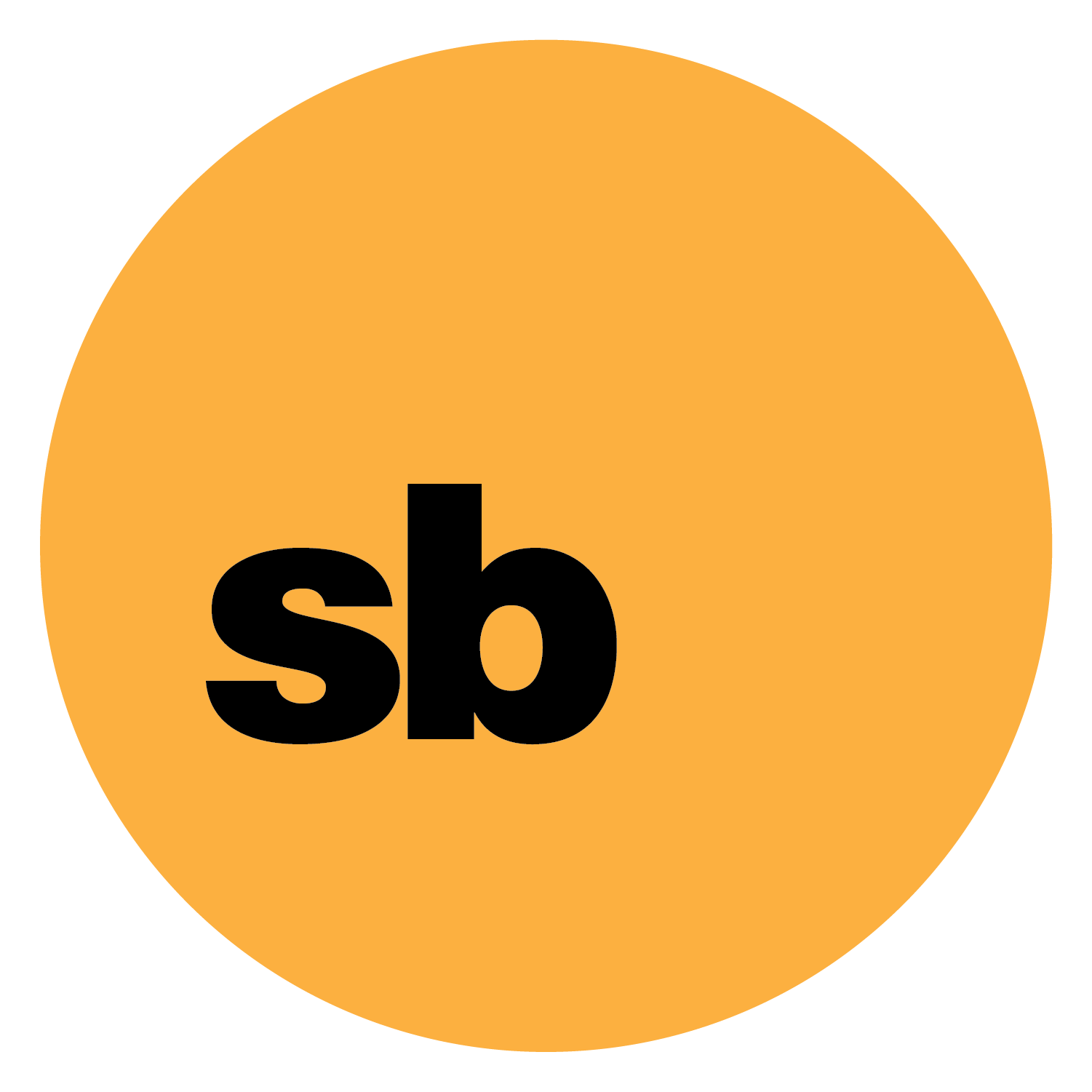BACKGROUND HISTORY
The Akzidenz-Grotesk typeface has been around since the late 1800s. Conceptualized and designed originally by the German Berthold Typeface Foundary, Akzidenz-Grotesk was known in the design industry as strikingly modern for it's time. Like most sans-serif typefaces of this era, Akzidenz-Grotesk featured an acute sense of simplicity and geometric shape that proved useful for many applications.
In 1937, Eduard Hoffman, a type designer from Switzerland joins and becomes the creative director of the Haas Type Foundry. It was at this foundry that Eduard Hoffman had a goal to standardize and categorize the Akzidenz-Grotesk type family. Eduard Hoffman saw an opportunity overhaul the Grotesk family in an effort to create a new typeface that could replace, if not surpass current design industry and typographic standards.
In an effort to meet his goal, Eduard Hoffman reaches out to Max Miedinger, a Swiss typesetter and graphic designer. Max and Eduard's work at the Haas Type Foundary would set a ground breaking typographic standard for the future of graphic design. In order to compete successfully in a demanding industry, they needed to come up with a new name for this new typeface. Thus, after months of debating, research, and type studying, 'Helvetica' was born, and became the new typographic standard for modern design.
THE PROJECT
For this project, I have created an interactive book that doubles as a display poster. Consisting of eight panels, this book aims to briefly cover the history surrounding one of the world's most used typeface families. As you unfold the book, you will notice a poster that contains a few type variants and sizing examples from the Helvetica type family.
Being inspired by modernist design principles, I have chosen to use a grid layout to neatly organize the content efficiently, guiding the readers through each panel. The color palette takes inspiration from the original 'Die Neue Haas Grotesk' and 'Helvetica' type specimen book written in colaboration with the Haas Type Foundary, Hans Neuberg, and Nelly Rudin in 1963.
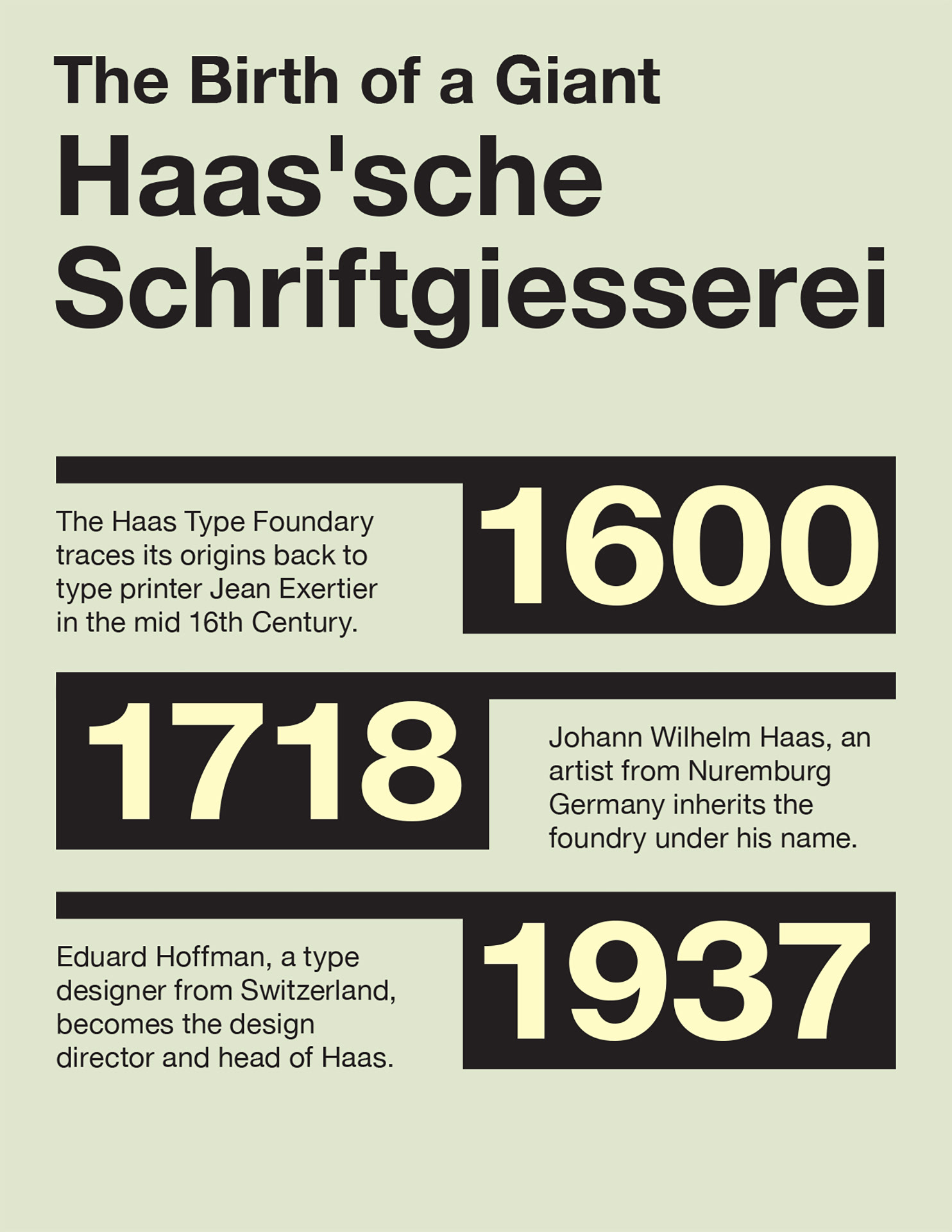
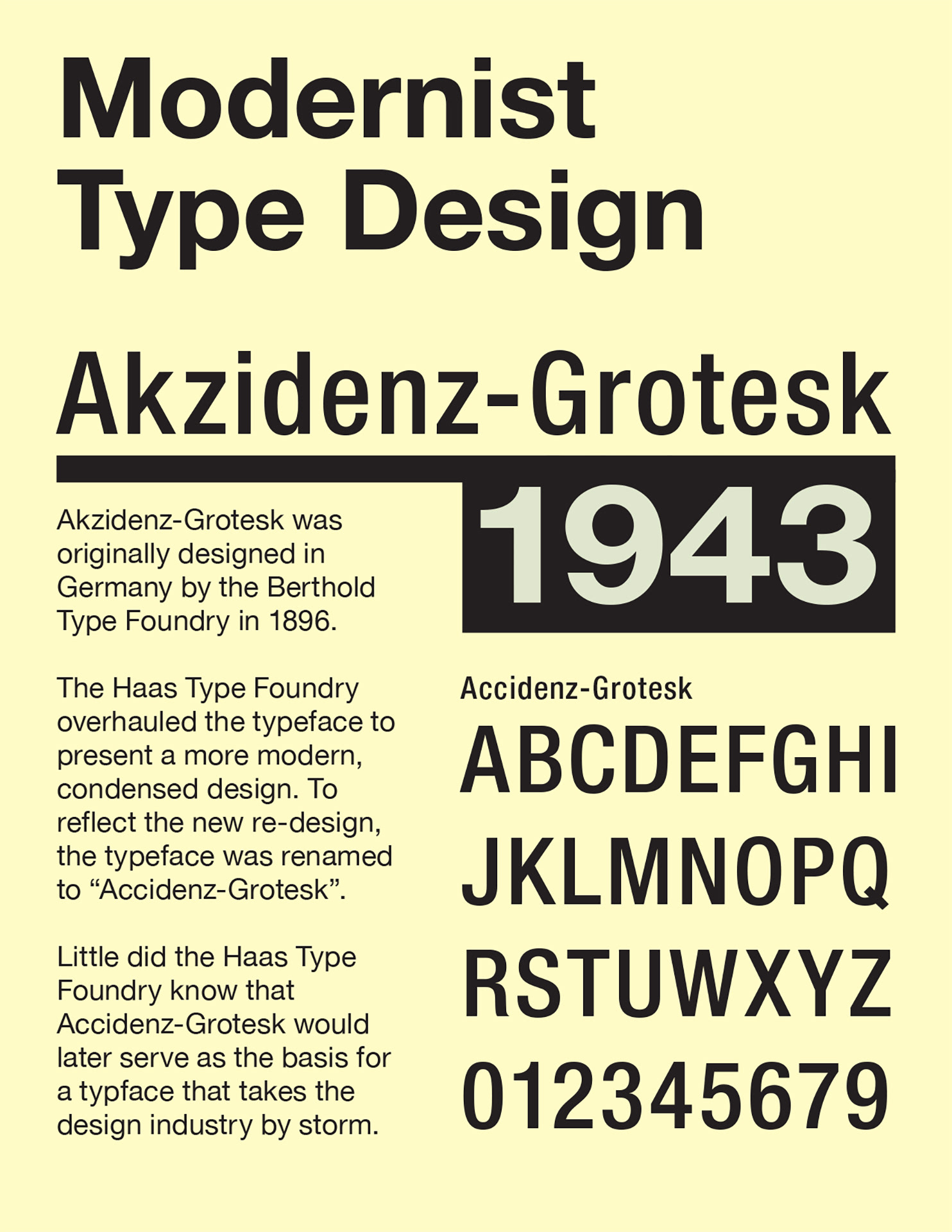
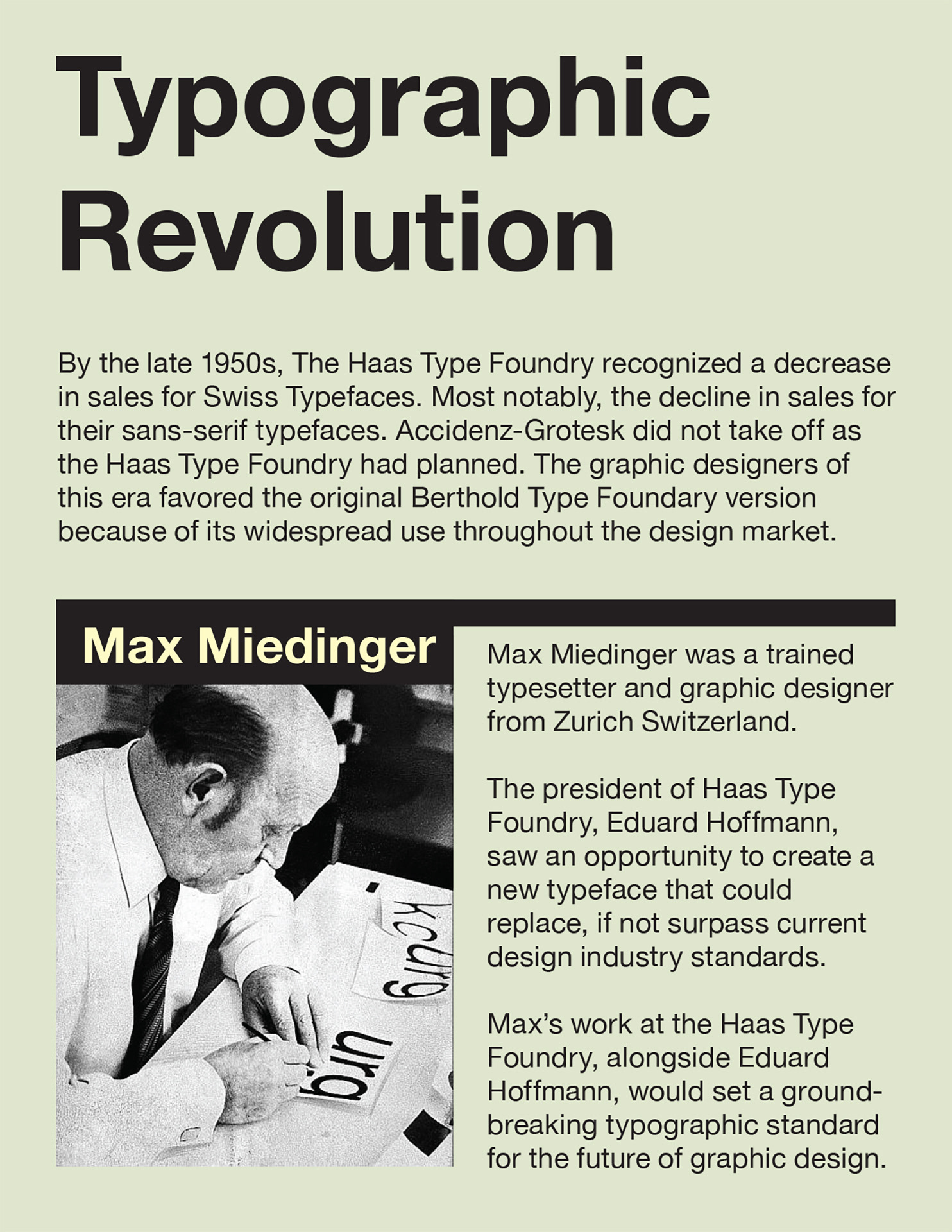
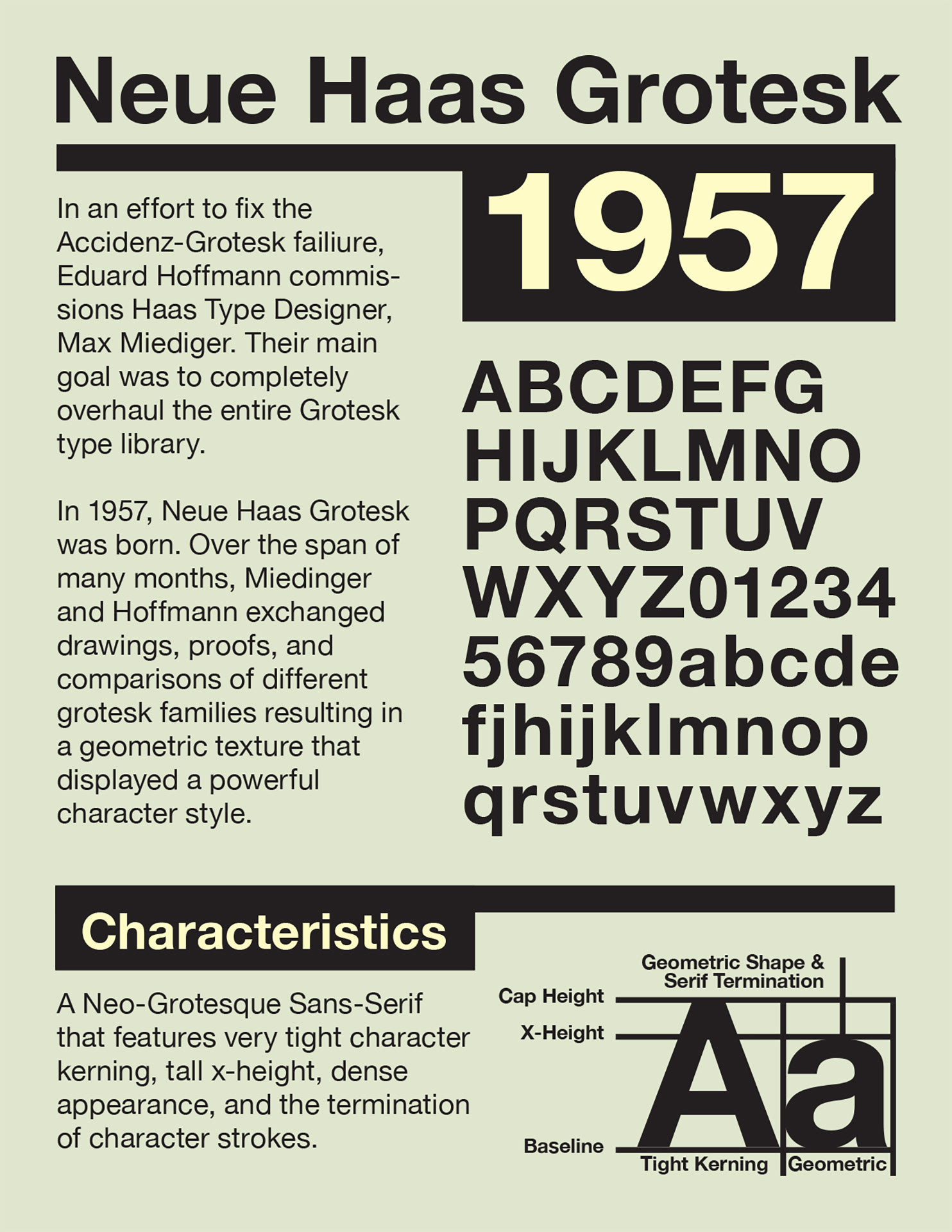
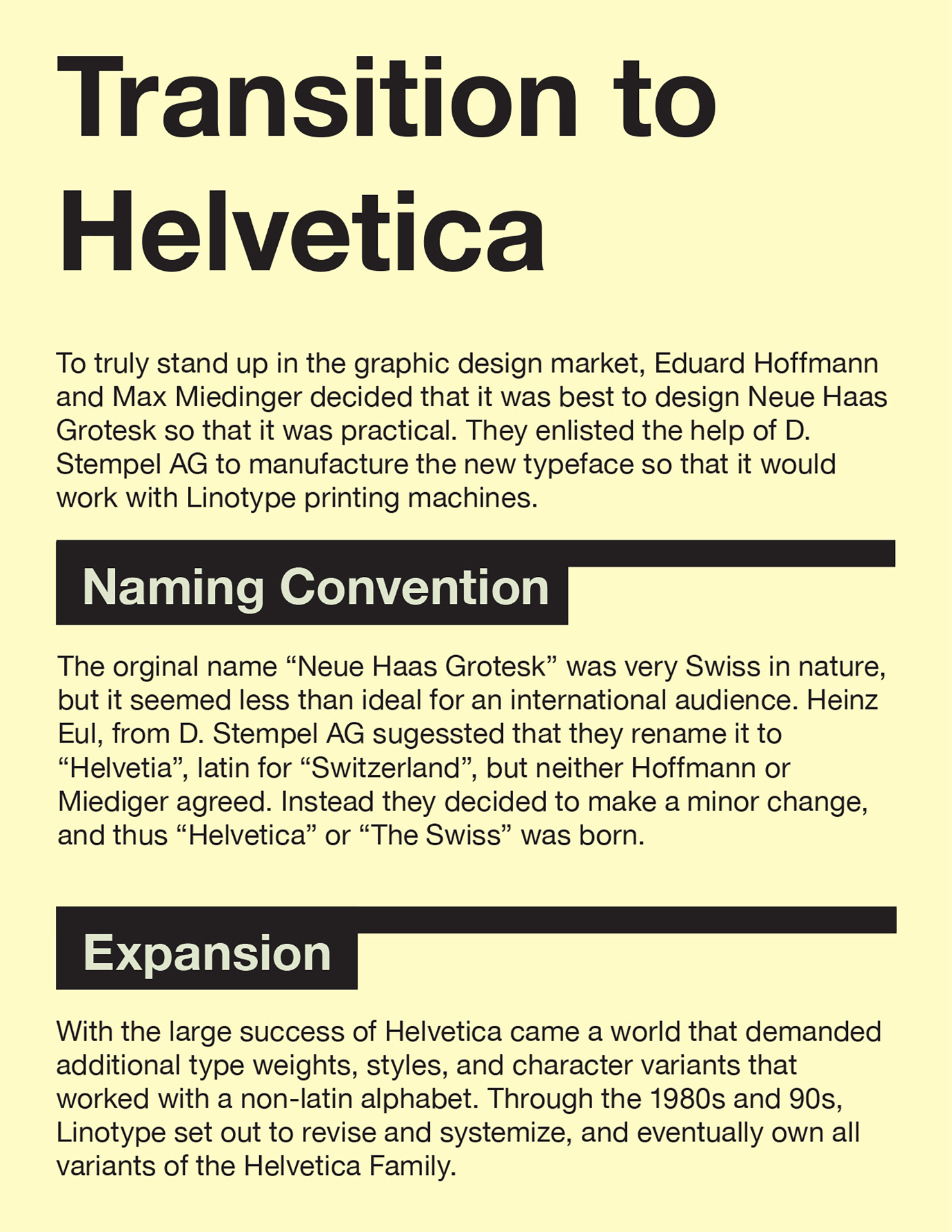
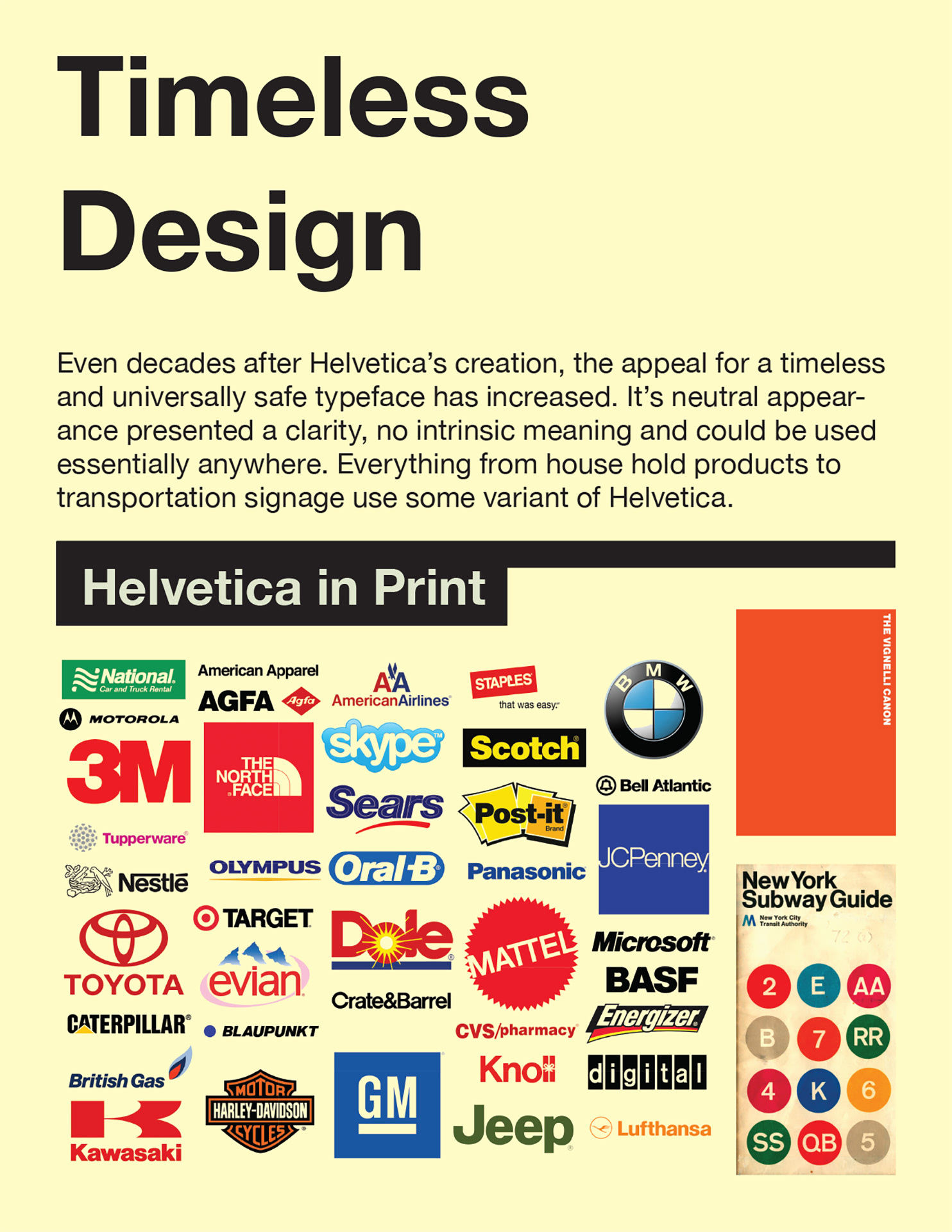
POSTER & BOOK LAYOUT
